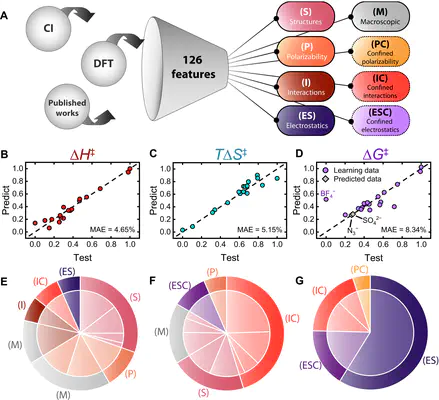
Abstract
Designing single-species selective membranes for high-precision separations requires a fundamental understanding of the molecular interactions governing solute transport. Here, we comprehensively assess molecular-level features that influence the separation of 18 different anions by nanoporous cellulose acetate membranes. Our analysis identifies the limitations of bulk solvation characteristics to explain ion transport, highlighted by the poor correlation between hydration energy and the measured permselectivity (R2 = 0.37). Entropy-enthalpy compensation, spanning 40 kilojoules per mole, leads to a free-energy barrier (∆G‡) variation of only ~8 kilojoules per mole across all anions. We apply machine learning to elucidate descriptors for energetic barriers from a set of 126 collected features. Notably, electrostatic features account for 75% of the overall features used to describe ∆G‡, despite the relatively uncharged state of cellulose acetate. Our work presents an approach for studying ion transport across nanoporous membranes that could enable the design of ion-selective membranes.